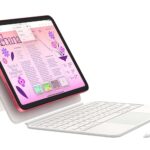It’s one of the most common New Year’s resolutions, but how do you actually start and maintain a good fitness routine? Across books, magazines, TV and social media, you’ll find an incredible amount of information, but the advice is often conflicting.
The most important thing to get right is consistency, which can be difficult when motivation is low. However, a smartwatch or fitness tracker can help with this – recording your workouts and other activity and tracking progress towards fitness goals is a great incentive to keep going.
Despite being bought by Google in 2021, Fitbit remains a leading brand when it comes to both types of wearable. Its devices remain quite different to the Pixel Watch 3 even though it has been confirmed Fitbit won’t make smartwatch style devices going forward.
Google is also yet to experiment with cheap fitness trackers, something Fitbit excels in and where it will continue to focus. Most Fitbits can be used to count steps, monitor heart rate, track sleep and record many different types of workout. You can also compete against friends and family as part of a large online community.
However, this a catch. The full experience requires a Fitbit Premium subscription, which costs £7.99/$9.99 per month or £79.99/$79.99 per year after an initial 90-day free trial.
In exchange, you get on-demand workouts, recipes, more advanced sleep tracking, various challenges and ‘Daily Readiness’ score (which uses various metrics to help you decide if you’re ready for a workout or need to prioritise recovery). You can still have a good experience without it, though.
In this article, we’ll help you decide which Fitbit is right for you. We’ve reviewed and ranked the top 10 options below, while you’ll find detailed buying advice at the bottom of the page. You might also want to consider a budget smartwatch or smart ring.
Why you should trust us: We perform in-depth, real-world testing on every new wearable fitness tracker Fitbit releases. We wear it day and night for a week or more to track movement and exercise, try out all of its additional features and wear it to bed for sleep tracking. We can compare findings with the countless rival trackers and watches we’ve tested.
Best Fitbits 2024
1. Fitbit Inspire 3 – Best Simple Fitbit
Pros
- Always-on colour screen
- Stylish & comfortable
- Comprehensive tracking
- Good battery life & charging
Cons
- Tiny screen
- Short charging wire
- No GPS
Price When Reviewed:
$99.95
The Inspire 3 is the best version yet of Fitbit’s simple fitness band, adding a colour screen for the first time. It’s subtle and comfortable and comes with three strap colour options.
Tracking is automatic and in our tests was very accurate for steps and heart rate, the two main metrics you will get from the Inspire 3. With the always-on display turned off you can eke 10 days of battery life before charging too.
As this is on the cheaper end of the Fitbit range there is no GPS built-in, so i you want to track the GPS route of your runs or cycles you’ll have to take your phone with you. And although the screen is now in colour it is very small in deed so is only good for glancing at the time or basic fitness stats. Though it can display smartphone notifications, it’s too tiny.
As with every Fitbit, you can only dig deeply into your day and night tracking stats if you pay for Fitbit Premium. But if you want the Fitbit basics and nothing else, this is the Fitbit for you.
2. Fitbit Charge 6 – Best Premium Tracker

Pros
- Google Maps & Fitbit Pay
- Stylish
Cons
- Connected rather than built-in GPS
- Some features require Premium subscription
Price When Reviewed:
$159.95
With the Charge 6, Fitbit has added useful Google apps to the familiar fitness tracker experience.
You can now access Google Maps, Google Pay and YouTube Music directly from your wrist, which is great…provided you use these services. It’s a shame that no alternative music streaming services are available.
Still, there’s plenty to like elsewhere, including an advanced heart rate sensor, ECGs and EDA stress tracking. It can be used to track more than 40 exercise modes (some automatically) and your sleep.
The side button is great for navigation, while you can even sync it with some gym equipment for personalised feedback. The hardware is largely unchanged, and only really let down by the inconsistent built-in GPS.
As with all Fitbits, you’ll need a Premium subscription for the full experience, and there are some occasional bugs. But on the whole, this is a very good fitness tracker.
Read our full
Fitbit Charge 6 review
3. Fitbit Versa 4 – Best Fitbit Smartwatch

Pros
- Good battery life
- Physical button
- Alexa built-in
Cons
- Some features locked behind Premium subscription
- No Google Assistant or music control
- Some Bluetooth connection problems
- No third-party apps
Price When Reviewed:
$199.95
The Fitbit Versa 4 is good, but it’s weirdly not as good as the Versa 3 that came out in 2020. Just like with the Fitbit Sense 2, Fitbit decided to remove music controls and third-party app support from the Versa 4 despite being features of the Versa 3. It’s a weird decision that makes us hesitate to call the Versa 4 a smartwatch – it’s more a fitness tracker that looks like a watch.
Thankfully it’s a great fitness tracker and the previous generations are discontinued so this is your main choice for a smartwatch-style other than the Sense 2.
With in-built GPS you can easily track run, swim, and cycle routes, while battery life is good enough to get at least three days if you are hammering it, and possibly more if you are a light user.
It has a physical side button instead of the fiddly touch button on the older model, and it has Amazon’s Alexa voice assistant – but no Google Assistant, despite Google now owning Fitbit.
Read our full
Fitbit Versa 4 review
4. Fitbit Sense 2 – Latest But Not Greatest

Pros
- Improved software
- Deep metric tracking
- Solid battery life
Cons
- Clunky user experience
- No music controls
- No third party apps
Price When Reviewed:
$249.95
The Fitbit Sense 2 is the sequel to 2020’s Fitbit Sense, but the new model is two steps forward and one step back. The Sense 2 does not have access to third party apps such as Starbucks and Spotify, and nor does it have music controls for changing the track on your phone – all things the first-gen product has.
We’re certain this is because Google – who owns Fitbit – wants apps and smartphone controls to be exclusive to its Pixel Watch. But it’s very frustrating that the Sense 2 doesn’t have features of older Fitbits, making it less useful.
That’s a shame because the Sense 2 has superior build quality and is a lovely slim smartwatch. It tracks all your core metrics and is the only Fitbit, along with the first Sense, to also track your stress through a ‘body response’ sensor that can measure skin temperature and other signs to try and hep you understand your stressors.
It’s clever, but telling you you’re stressed might make you more stressed. We also hesitate to call the Sense 2 a smartwatch because Google has stripped it of smartwatch features. You’re oddly better off buying the original Fitbit Sense.
Read our full
Fitbit Sense 2 review
5. Fitbit Ace 3 – Best Fitbit For Children

Pros
- Designed for kids
- Parent and Kid Views
Cons
- Lacks heart monitor
- Less features than others
- Monochrome
Price When Reviewed:
$79.95
The Fitbit Ace 3 is designed especially for younger children. It’s a well-priced if basic activity tracker. It lacks most of the more advanced health measurements that you’ll find on the pricier Fitbits but it has enough to motivate a family to up their exercise.
Until recently, children under 13 were not allowed to have a personal Fitbit account. Now the minimum age is 6 – as long as you use the Fitbit Ace 3, which measures Steps and Active Time, plus basic sleep monitoring.
Special family account features mean kids (and parents) can track their basic activity stats through secure Kid View and Parent Views; where they can see their progress, compete in challenges, and earn badges.
The Ace 3 is about exercise, not weight loss – Fitbit hides the calorie counter to stop children from obsessing about their weight.
Older kids might prefer a Fitbit that does more, such as measuring their heart rate. The Fitbit Inspire 2 might lack the Ace 3’s wraparound silicone padding but it offers a big bunch of features, including exercise modes, Cardio Levels, Sleep Score, Guided Breathing and for just £20/US$20 extra, and we’d recommend this for older or more responsible children.
Read our full
Fitbit Ace 3 review
6. Fitbit Luxe – Affordable & Fashionable

Pros
- Fitness and wellness features
- Colour touchscreen
- Fashion accessories
- Stainless Steel case
Price When Reviewed:
$99.95
The Fitbit Luxe’s feature set covers all the fitness and wellness basics – steps, calories burned, Active Zone Minutes, distance travelled, heart rate, sleep tracking, swim tracking, guided relaxation breathing, the ability to auto-detect workouts, and smartphone notifications.
The colour touchscreen is really the Luxe’s standout feature in Fitbit’s range of trackers.
Maybe the Luxe stands for “Inspire 3 Deluxe”, as that’s what you get with the superior stainless-steel build and colour screen; an improved Inspire 3 build but with essentially the same fitness-tracking features.
The ability to dress it up with jewellery accessory options will appeal to many. But if you’re after the most affordable Fitbit, we recommend the Inspire 3.
Read our full
Fitbit Luxe review
7. Fitbit Aria Air – Best Fitbit smart scale

Cons
- Other scales have more metrics
If you couldn’t care less about body fat percentage and other weight and body statistics, and just want your weight to be automatically synced to your Fitbit app, then the Fitbit Aria Air is the scale for you, and will save you a fair bit on the slightly more able Aria 2.
You also get your Body Mass Index (BMI), too, but nothing else.
If you want to dig deeper and monitor your body fat percentage and a raft of other metrics such as body fat percentage, water %, muscle & bone mass, then look at our other best digital smart scales reviews.
Read our full
Fitbit Aria Air review
Your buying guide for Fitbits in 2024
Why should I get a fitness tracker?
The benefits of getting more exercise cannot be exaggerated. Going for regular walks reduces the risk of heart attack or stroke by 31%. A study of 650,000 people found that being active for just 11 minutes a day after the age of 40 yielded 1.8 years of added life expectancy. Being active for an hour or more a day increased life expectancy by 4.2 years.
Exercise strengthens bones, boosts the immune system, lessens the risk of getting diabetes and a number of cancers (such as breast cancer), improves mood, and staves off senility. There is probably not a single organ in the body that does not benefit from exercise.
A healthy heart in our youth and middle age lowers the risk of developing dementia later in life, according to a study by Oxford University.
And it’s not just physical – a 30-minute walk can prevent a build-up of stress during the day, as aerobic activities help keep levels of the stress hormone cortisol in check.
10,000 steps a day is the standard recommended goal, although this has little scientific basis. What’s actually more important is how many minutes you are active in a day – experts recommend at least 150 minutes a week. It’s especially important if your exercise is on a bike, where steps don’t really count.
Unless you want a fully-fledged smartwatch, a fitness tracker is one of the easiest ways to stay on track with your health goals. And despite being bought by Google in 2019, Fitbit remains the leading name when it comes to fitness trackers.
What other features does a Fitbit have?
All Fitbits can measure Active Minutes, but other features often vary between models.
The more sophisticated Active Zone Minutes measurement is nowadays available across more recent Fitbits, including all models of Sense and Versa, plus Inspire 2 and later, Inspire 2 and later and Luxe.
Most Fitbits also have a 24-hour heart-rate monitor (Inspire HR, Inspire 2, Inspire 3, Luxe, Charge 4, Charge 5, Charge 6, Ionic, Versa Lite, Versa 2, Versa 3, Versa 4, Sense and Sense 2) feature Heart Rate Zones, Cardio Fitness Level, and Guided Breathing Sessions.
They also show advanced Sleep Stages data, including duration of Light, Deep and REM sleep, plus give a Sleep Score. Those without the HR (Ace 3, Ace 2, Inspire 1) offer more basic sleep tracking.
Learn more in our separate Fitbit scores and measurements explainer.
Which features do I need on a Fitbit?
All Fitbits have a built-in alarm, ATM water resistance, accelerometer and the ability to notify you of incoming calls and notifications and when you need to move. However, the following all vary considerably between models:
- Altimeter – allows you to measure stairs or height climbed
- Built-in GPS – allows you to record location data without needing to be connected to your phone
- Heart rate monitor
- Blood oxygen monitor
- Cardio Fitness Level – cardiovascular fitness metric based on your VO2 Max
- Six-axis gyroscope – can more accurately track swim strokes and laps
- Built-in speaker and microphone – allows you to answer calls from your wrist
- Automatic workout detection – data recorded even when you don’t manually start a workout
- Sleep tracking
- Guided breathing sessions
- Female health tracking
- Find your Fitbit – uses Tile network
- Fitbit Pay – replaced with Google Pay on some models
- Third-party app support – includes Spotify on some models
- Fitbit Coach app – provides on-screen video workouts
- Voice assistant support – Amazon Alexa or Google Assistant
If one or more of these features are crucial for you, make sure the Fitbit you’re thinking of buying has it. If in doubt, read the full reviews linked to for each of the top 10 above to learn more.
Do all Fitbits use the same app?
Yes. They are all compatible with the same iPhone and Android apps. Despite Google’s purchase of Fitbit in 2021, that looks to remain the case for the foreseeable.
The app displays all your daily and historical stats in beautiful graphs, that expand in landscape orientation, as well as display in portrait view. It’s here that Fitbit really beats its activity-tracking rivals.
The desktop dashboard is another visually attractive and informative place to monitor your activity and fitness statistics.
And as an incentive, you can link with friends, family and colleagues to compete against each other on the leaderboard, get involved in daily or weekly Challenges and Adventures, and win badges determined by passing goals, and historical milestones. These aspects of the Fitbit system really set it apart from many other trackers.
Should I get Fitbit Premium?
It depends what you’re looking for from a Fitbit. After an initial 90-day free trial, Fitbit Premium costs £7.99/$9.99 per month or £79.99/$79.99 per year.
Compared to the free version, it adds the following:
- Daily Readiness Score – gives you an idea each morning whether you’re ready for a workout or should be resting instead
- Workout videos and audio
- More detailed sleep data – just an overall score on free version
- Sleep Profile – monthly analysis of key sleep metrics
- More detailed stress management data – just an overall score on free version
- Mindfulness sessions
- Wellness Report – shows how activity, sleep, stress etc is impacting your body
- Recipes and nutrition tips
- Emergency Sharing, Fall Detection and Safety Check when without your phone – only on 4G LTE watches
Read the full article here












